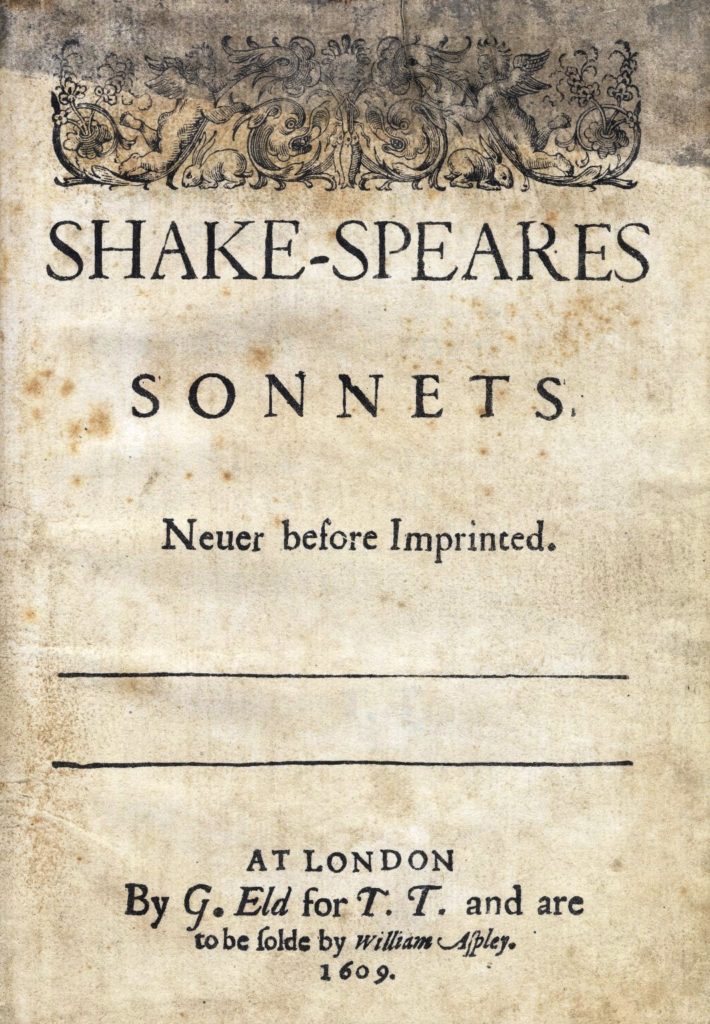Shakespearean Sonnet Example
Contents
From fairest creatures we desire increase,
That thereby beauty’s rose might never die,
But as the riper should by time decrease,
His tender heir must bear his memory,
But thou contracted to thine own bright eyes,
Feed’st thy light’s flame with self-substantial fuel,
Making a famine where abundance lies,
Thy self thy foe, to thy sweet self too cruel:
Thou that art now the world’s fresh ornament,
And only herald to the gaudy spring,
Within thine own bud buriest thy content,
And tender churl mak’st waste in niggarding:
Pity the world, or else this glutton be,
To eat the world’s due, by the grave and thee.

William Shakespeare, Sonnet 1
William Shakespeare, one of the master writers of English Language needs no introduction. He was famous as a playwright and a writer. His plays contributed greatly to the language of English and Western literature as a whole. One of his major contributions is ‘Sonnets’.
Shakespeare sonnet structure:
Sonnets are a kind of poem with fourteen lines, i.e (3 quatrains and a couplet) They are traditionally written in iambic pentameter – that is, in lines ten syllables long, with accents falling on every second syllable. Shakespeare’s sonnets were also the same. The origin of sonnets may be traced from Italy. During the Tudor period, it was introduced in England by Sir Thomas Wyatt.

Shakespeare’s sonnets are famous for a variety of reasons. Shakespeare followed the more idiomatic rhyme scheme of sonnets that Sir Philip Sydney used in the first great Elizabethan sonnets cycle, Astrophel and Stella. Shakespeare’s sonnets are a collection of 154 sonnets on the whole. The first publication of Shakespeare sonnets appeared in 1609, entitled
Shakespeare’s Sonnets: Never before imprinted. This was done without the permission of Shakespeare himself, and it is alleged that it was a move to make use of the great author’s reputation. Thomas Thorpe published this first compilation and it is unknown whether he Thorpe used an authorized manuscript from Shakespeare or an unauthorized copy.
The second one was the 1640 edition of William Shakespeare’s sonnets with an engraving by William Marshall. To comment as a whole, Shakespeare’s sonnets are stories about love, beauty, mortality and death. The theme may be something like a handsome boy, his love, his loneliness, a poet and so on.

How many sonnets are written by Shakespeare?
Shakespeare wrote a total of 154 sonnets.
Sonnets 1 to 126 are addressed to, or concern, a young man. Among these, the first 17 urges a young man to marry and have children to immortalize his beauty. Sonnets 127 to 152 are addressed to a dark lady. It is about her facial features, her hair, her character etc.
Why is Sonnet 18 so famous?
Sonnet 18 of Shakespeare is believed to be so famous because it is perhaps the most relatable poem. It addresses a fear that is common to almost every human being – the fear of death and being forgotten. At the same time, it confirms the immortality of love and poetry.
The speaker says that the beauty of his lover shall never fade because she will on through his poems.
The following are supposed to be the most famous sonnets by William Shakespeare:
What is Shakespeare’s most famous sonnet?
- 126 William Shakespeare Sonnet – O thou my lovely boy
- 130 William Shakespeare Sonnet – My Mistress’ eyes
- 029 William Shakespeare Sonnet – When in disgrace with fortune
- 116 William Shakespeare Sonnet – Let me not to the marriage of true minds
- 18 William Shakespeare Sonnet – Shall I compare thee to a Summer’s day?
Various sonnets of William Shakespeare are available online. Some useful websites are as follows:
http://www.william-shakespeare.info/william-shakespeare-sonnets.htm
http://www.shakespeare-online.com/sonnets/
http://poetry.eserver.org/sonnets/001.html
http://www.sparknotes.com/shakespeare/shakesonnets/themes.html
More Info On- William Shakespeare Sonnet 16, William Shakespeare Sonnet 29, Elizabethan Era Sonnet
